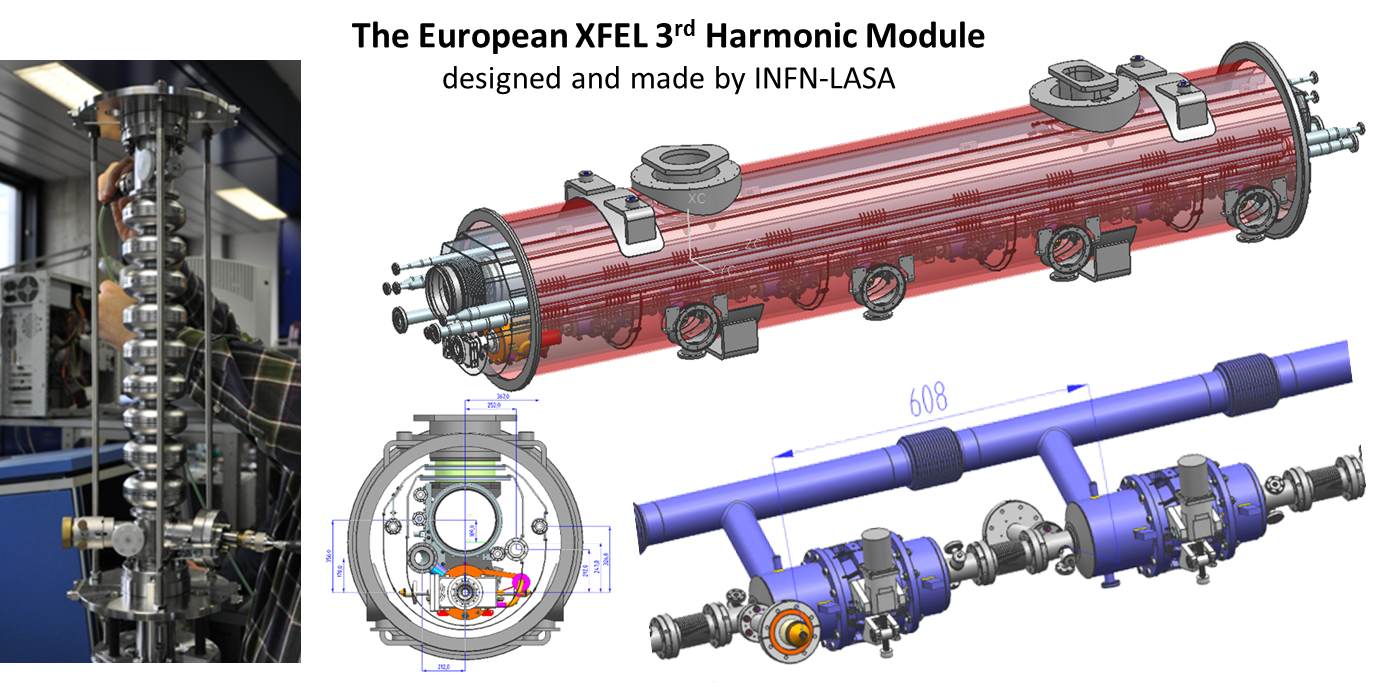
The annual meeting of the "TESLA Technology Collaboration” (TTC) will take place from 6 to 9 February at the Department of Physics of the University of Milan, with the substantial support of the Milan Section of the National Institute of Nuclear Physics. Since the beginning of the nineties, TESLA has gathered almost all the laboratories and institutions that are leaders in the development of superconductivity for particle acceleration. Born from the powerful push of high energy physics for the realization of a linear electron / positron collider in the TeV region, the TTC has ended up exporting its results in other sciende domains, making it possible to envisage new analytical machines able to film biochemical processes, and power machines able to produce clean energy.
The importance of the precision measurements of the W and Z bosons made at the CERN LEP accelerator provided the motivation to try to build a similar but much more sophisticated accelerator that would allow, with the same precision as LEP, to measure in the TeV region what still it was only predicted by some theories. The bet of the linear electron and positron collider, complementary to the LHC, has fascinated the particle accelerator community and has generated a global competition in which different technologies have been tackled, sponsored by the large high energy physics laboratories such as CERN, SLAC, KEK and DESY, each of them supported by a conspicuous international collaboration.
The TESLA collaboration, hosted by the DESY Laboratory in Hamburg, chose the most futuristic way, by focusing on an exponential development of radiofrequency superconductivity, SRF. The bet has paid off, and in 2004 TESLA became ILC, i.e. the International Linear Collider of reference for all. Carlo Pagani, who today hosts the annual Collaboration meeting in Milan, was TESLA's project leader at the time of the selection.
The exceptional development of TESLA technology, has transformed the initial collaboration into the even larger TESLA Technology Collaboration, bringing together all the laboratories and projects that make use of the results achieved and commit to the their further development. In particular, the recently completed realization in Hamburg of the free electron laser called "European XFEL" represented, while awaiting the great collider, the natural continuation of TESLA's commitment. The goal of Collaboration is not just to build the best possible collider but to use the results gradually achieved by the various laboratories to make other scientific and application projects possible. What has not changed since the collaboration was established is that the membership of a laboratory or a scientific institution involves the signing of a Memorandum of Understanding, MoU, in which everyone is committed to the free circulation of ideas and results .
The massive international participation at the Milan TTC Meeting , which far exceeds that of all previous meetings, is not justified only by the fact that the research led by Carlo Pagani at the INFN-LASA Laboratory has been one of the protagonists in all these years, but can be understood if we think that in the wake of XFEL, other major projects based on TESLA technology are being built in the world. Exchange of experience and ideas is increasingly fundamental for global progress in intrinsically strategic sectors such as biosciences and sustainable energy.
In this spirit the meeting will end with two seminars open to the public and broadcast in streaming. The first one, held by Wenlong Zhan, vice president of the Chinese Academy of Sciences, will illustrate how China is moving with great effort and resources to try to develop that safe nuclear without waste that Carlo Rubbia had tried to start over 20 years ago. The second one, held by Jochen Schneider, DESY research director emeritus, will illustrate the new potential that opens up with the availability of new free electron lasers that provide ultra-brilliant pulses of coherent X-rays. The element in common to these two topics, so different and so fascinating is the TESLA Technology.








 Subscribe to RSS Feed
Subscribe to RSS Feed